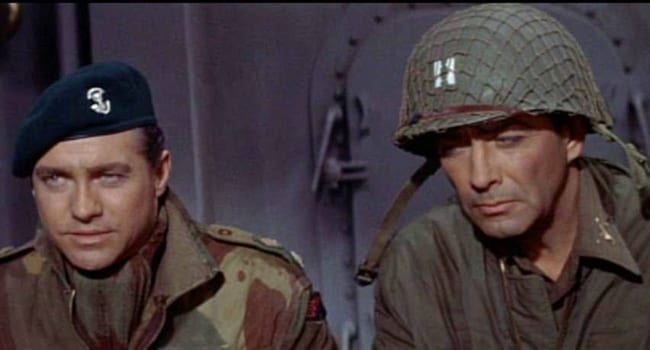 Turner Classic Movies marked the American Memorial Day weekend by showing a string of war films, one of which was D-Day the Sixth of June.
Turner Classic Movies marked the American Memorial Day weekend by showing a string of war films, one of which was D-Day the Sixth of June.
Released in 1956 and based on a novel published the previous year, I’d seen it at the local cinema in Dublin, Ireland, more than 60 years ago.
Back then, I’d been disappointed.
The promotional poster had suggested a movie loaded with military action. But in reality, it was a three-sided love story using the Second World War as a backdrop. Boys barely into adolescence don’t tend to go for that sort of thing. Or at least they didn’t in my day.
So I decided to give it a try on the small screen. And it was more interesting this time out.
The novel, The Sixth of June, is by a Canadian, Lionel Shapiro. He served as a war correspondent for the Montreal Gazette. Shapiro was a Montreal native who’d cut his journalistic teeth as a sports writer.
In setting the context for his story, he drew on first-hand knowledge, having had a front seat at the Allied invasions of Sicily and Salerno, and landing on Juno Beach with Canadian forces on D-Day.
But Shapiro wasn’t the only person involved with the movie who’d been present in Normandy on that fateful day.
One of the two male leads – Richard Todd – had parachuted in with the British 6th Airborne Division a few hours ahead of the beach landings. The mission was to capture key bridges, thereby impeding a German counter-offensive.
Born in Dublin in 1919, Todd had an interesting life.
His father – a physician – came from County Cork and played rugby for Ireland prior to the First World War. There was also a family connection with Toome, County Antrim, and Todd later recalled childhood summers there as among the happiest days of his life.
As a young man living in England, Todd set his heart on being an actor but volunteered for military service shortly after war broke out in 1939. He was apparently the gung-ho type, keen to see action and willing to invent whatever backstory would get him there.
By 1943, he was a lieutenant serving as a liaison officer. However, the itch for something more exciting led him to volunteer for the Parachute Regiment. His course completion report described him this way: “Jumps well, cheerful, fine example to his men.”
Post-war, Todd’s acting career benefited from a Hollywood financial conundrum.
Thanks to Britain’s currency controls, studios like Warner Brothers and Disney were unable to repatriate the revenues they’d accumulated from showing their movies in Britain. So they opted to spend the money by actually making films there, sometimes using local talent in key roles.
One of these – the 1949 film adaptation of the play The Hasty Heart – gave Todd his big break. Although his dramatic range was never much regarded by the critics, he scored an Academy Award Best Actor nomination.
Disney, however, chose to deploy its funds on a different kind of cinematic vehicle. Costume dramas with lots of adventure were the order of the day, including titles like The Story of Robin Hood and His Merrie Men and Rob Roy, the Highland Rogue.
Todd was a natural fit for leading man. Sturdily handsome and highly energetic, he came by derring-do honestly. After Normandy, pretending for the screen was a walk in the park.
In addition to its glossy professionalism, D-Day the Sixth of June is interesting in another way. Unlike many mid-20th century Hollywood war movies, it resists the temptation to portray the Allied war effort as primarily American. No doubt Shapiro’s source material can take the credit for that.
So we have a sidebar on the disastrous 1942 Dieppe raid where less than half of the repulsed Canadian attacking force managed to retreat safely to England. And the mission pivotal to the movie’s climactic battle scene is led by a British officer (played by Todd) rather than the American lead (Robert Taylor).
The source novel was Shapiro’s third and easily his most lucrative. Reputedly, he received $100,000 for the movie rights, which was serious money in the mid-1950s. He also won a Governor General’s Award for English-language fiction.
Unfortunately, Shapiro didn’t live long enough to fully savour his success, dying of cancer in 1958. He was only 50.
Troy Media columnist Pat Murphy casts a history buff’s eye at the goings-on in our world. Never cynical – well, perhaps just a little bit.
The views, opinions and positions expressed by columnists and contributors are the author’s alone. They do not inherently or expressly reflect the views, opinions and/or positions of our publication.

